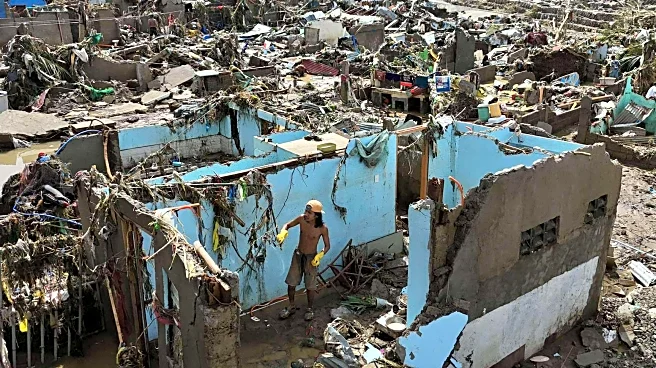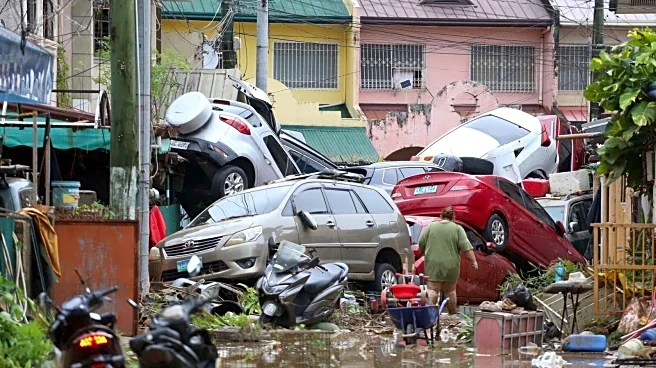What's Happening?
Typhoon Kalmaegi has struck the central Philippines, resulting in at least 26 fatalities and the displacement of hundreds of thousands of residents. The storm, known locally as Tino, brought with it destructive
winds and severe flooding, exacerbating the challenges faced by a region still recovering from a recent earthquake. The majority of the casualties were due to drowning, with additional deaths caused by fallen trees, electrocution, and landslides. The national Office of Civil Defense reported that over 380,000 people have been displaced, many of whom evacuated prior to the typhoon's landfall.
Why It's Important?
The impact of Typhoon Kalmaegi highlights the vulnerability of the Philippines to natural disasters, which frequently disrupt the lives of its citizens and strain the country's resources. The displacement of such a large number of people poses significant challenges for emergency services and relief efforts, which must now address immediate needs such as shelter, food, and medical care. The storm's devastation also underscores the ongoing need for improved infrastructure and disaster preparedness in the region to mitigate the effects of future natural calamities.
What's Next?
As the immediate response to the disaster unfolds, efforts will likely focus on providing aid to those affected and assessing the full extent of the damage. The government and international aid organizations may need to coordinate closely to ensure that relief reaches the most impacted areas. Additionally, there may be calls for increased investment in disaster risk reduction and infrastructure resilience to better prepare for future events.












